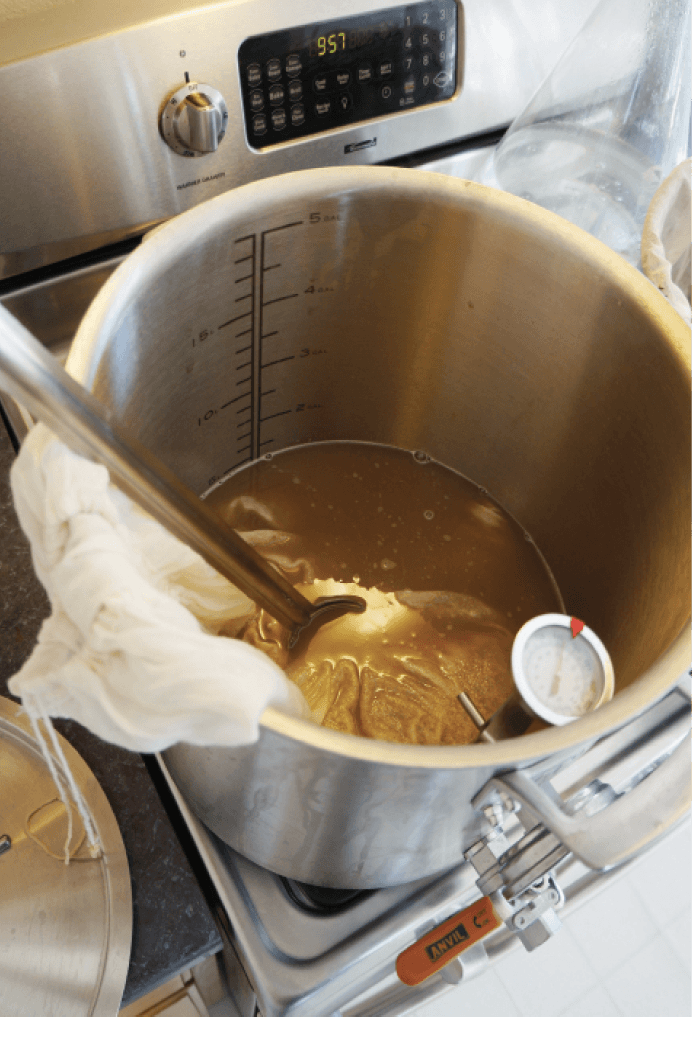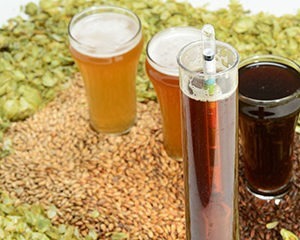Hit Your Post-Boil Volume
One of the biggest challenges for beginner brewers is to end your brewday with the volume of wort in your fermenter that you intended. This is often a big reason for not hitting the target starting gravity and can be frustrating after all your hard work. So it’s time to dial in your procedure so that you are hitting your proper post-boil volume everytime.
The first thing every brewer should have at their disposal is a way to measure the volume of wort in the brew kettle. Many brew kettles these days come pre-equipped with either internal etched volume markers or an exterior sight glass to provide volume measurements. If your brew kettle does not already have these volume markers —fear not, there are several ways to fix that. The first and simplest solution is to notch a wooden dowel or brewing spoon with fixed volumes. Depending on the size of your brew pot and the level of precision you require, you will need an accurate way to measure out either 1 gallon, half gallon, or 1 quart increments (4, 2, or 1 L). Start filling your brew kettle one increment at a time and mark off on the dowel or brewing spoon each volume. Take your time making the markings, rushing this step can easily lead to inaccurate volume readings.
If you want to get fancier, you can internally etch your kettle (see July/August 2014 “Projects” department) or add an external sight glass. External sight glasses can be purchased from several reputable vendors of homebrewing hardware. The external sight glass does have the advantage over the internally etched volume markers in that steam from boiling wort can obscure the etchings at a full rolling boil. On the other side of the coin, a step drill bit or hole saw or knockout punch is required to make a hole for an external sight glass. Also external sight glasses need a heat shield to be effective if using gas burners.
Now that you can measure your volume in your kettle, you will want to keep an eye on three key factors to hit your target volume: Boil-off rate, thermal contraction of your wort, and wort loss going into the fermenter. This will allow you to gauge about how much wort should be in the brew kettle at the start of the boil.

In the commercial world, the goal of many is to have a boil off rate at around 10% of the total wort volume per hour. Many homebrewers though have a higher boil-off rate then our commercial brethren, sometimes as high as 50% of the volume for small 1-gallon (4-L) sized batches. I often strive to boil-off 1 gallon (4 L) per hour which lands me in the 10-20% boil-off rate depending on what size batch I am brewing. For your system, try to obtain a steady rolling boil, not too vigorous, but more than just a simmer. Check volumes before the start of the boil, then every 15 minute increment during the boil and the final volume in the brew kettle while still hot. Keep track of this number so you can gauge your average boil-off rate per hour.
Thermal contraction of the wort can be a real hang-up for beginning homebrewers. Hot wort will shrink roughly 4% when going from near boil temperatures down to room temperature. To put that in perspective, that means you lose almost one quart (1 L) of volume during the chilling process on a 5 gal. (19 L) batch. Be careful though, a rolling boil will seem to add even more volume as well since the steam in the wort is pushing the liquid upwards falsely adding volume to the kettle. The 4% loss comes after the wort has stopped boiling.
The final consideration is how much wort will you lose between the kettle and the fermenter. Some folks dump the entire volume of wort, trub material and all, into the fermenter so that however much volume was in the kettle, ends up in the fermenter. Some folks will try to leave out the trub material by using a pick-up tube or gently pouring direct from the kettle to the fermenter. No matter what your method, be sure to measure out the volume you leave behind and keep track over the course of several batches. If you have an external chilling system like a counterflow chiller or plate chiller or are using a pump, find out how much wort you lost by draining all the captured wort and again measure this over several batches. These losses all need to be added back in when deciding pre-boil volume.



